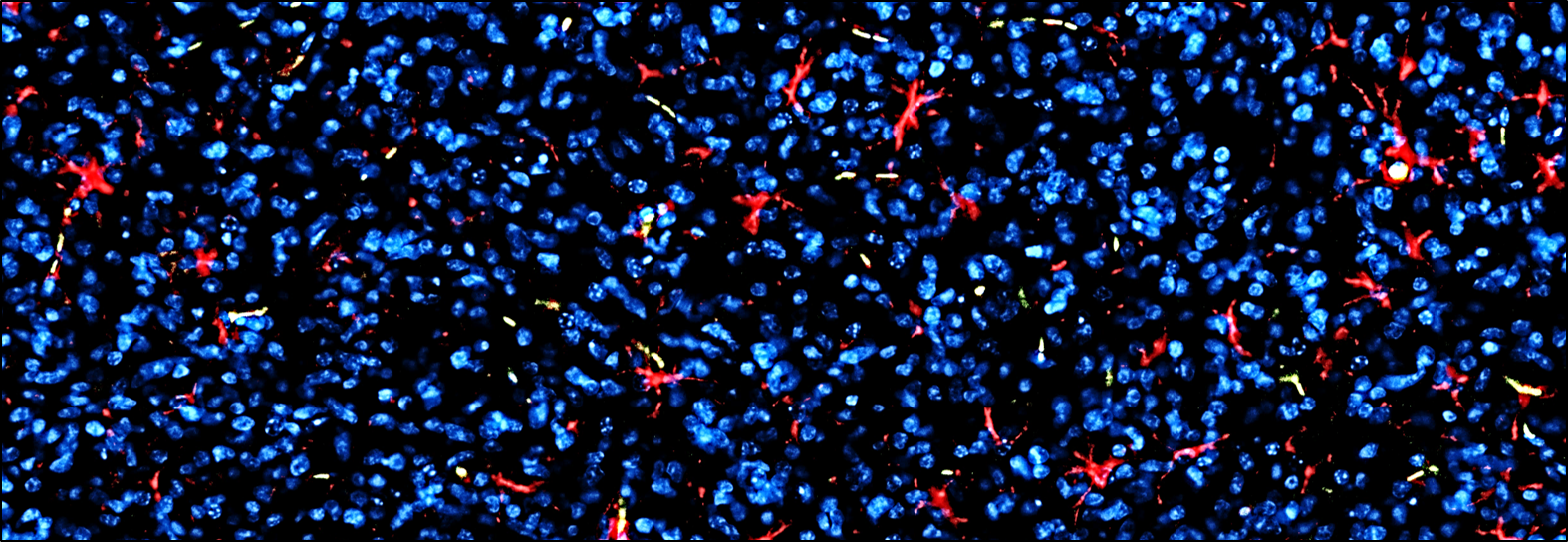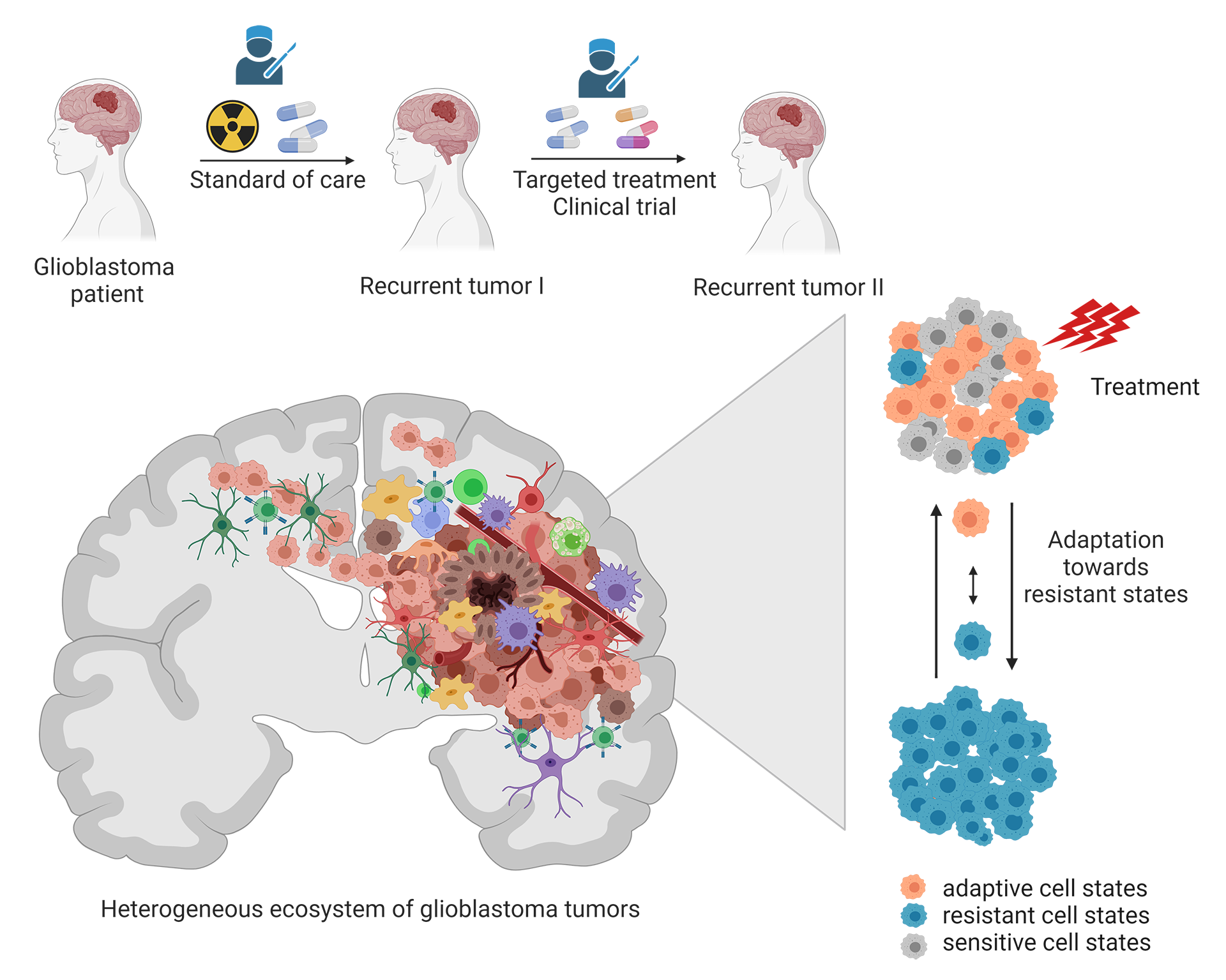
Tackling tumour heterogeneity and PLASTIcity as resistance mechanisms in Glioblastoma
Glioblastoma tumour cells are very flexible. They can adapt easily to survive hostile environments and dynamically interact with normal cells to create a tumour microenvironment in the brain. We believe that the strong plasticity of such a tumour ecosystem allows fast adaptation and resistance to therapies, including radio-chemotherapy and targeted treatments.

In this project we plan to investigate how tumour cells and their microenvironment change upon treatment. We will examine tumours obtained from glioblastoma patients during the first surgery before the treatment and compare them to the recurrent tumours after treatment failure. Our cohort will contain patients that underwent standard-of-care and targeted treatments.
In the future, we will administer treatments to patient-derived cancer models in the laboratory and examine their dynamic cell behaviour. We will perform gene expression analysis in time and space using novel technologies to examine molecular profiles of individual cells directly within the tumour. In addition, we will analyze the molecular mechanisms responsible for gene expression changes, including DNA mutations and epigenetics. Thanks to innovative computational algorithms, we will reveal molecular regulators of plasticity as potential targets for new treatment strategies. We will study treatment resistance signatures to identify biomarkers for better stratification of patients for personalized therapies in the future. Finally, we will design novel co-treatments, which will be tested in patient-derived preclinical models.